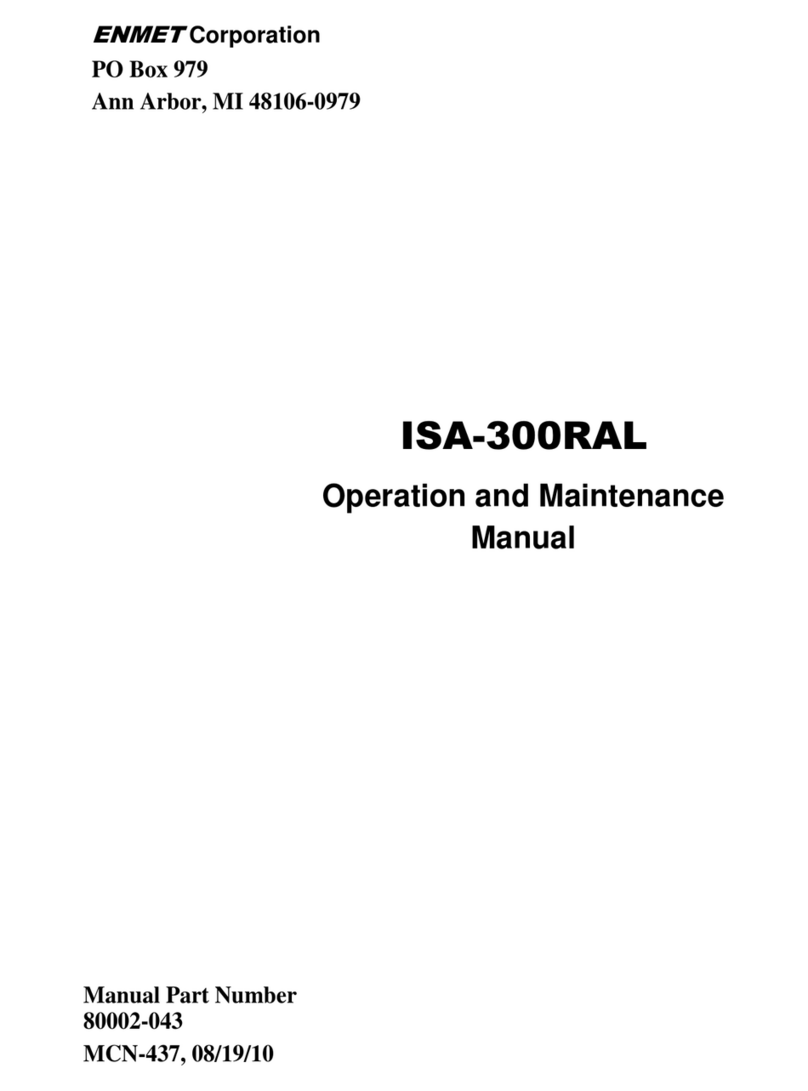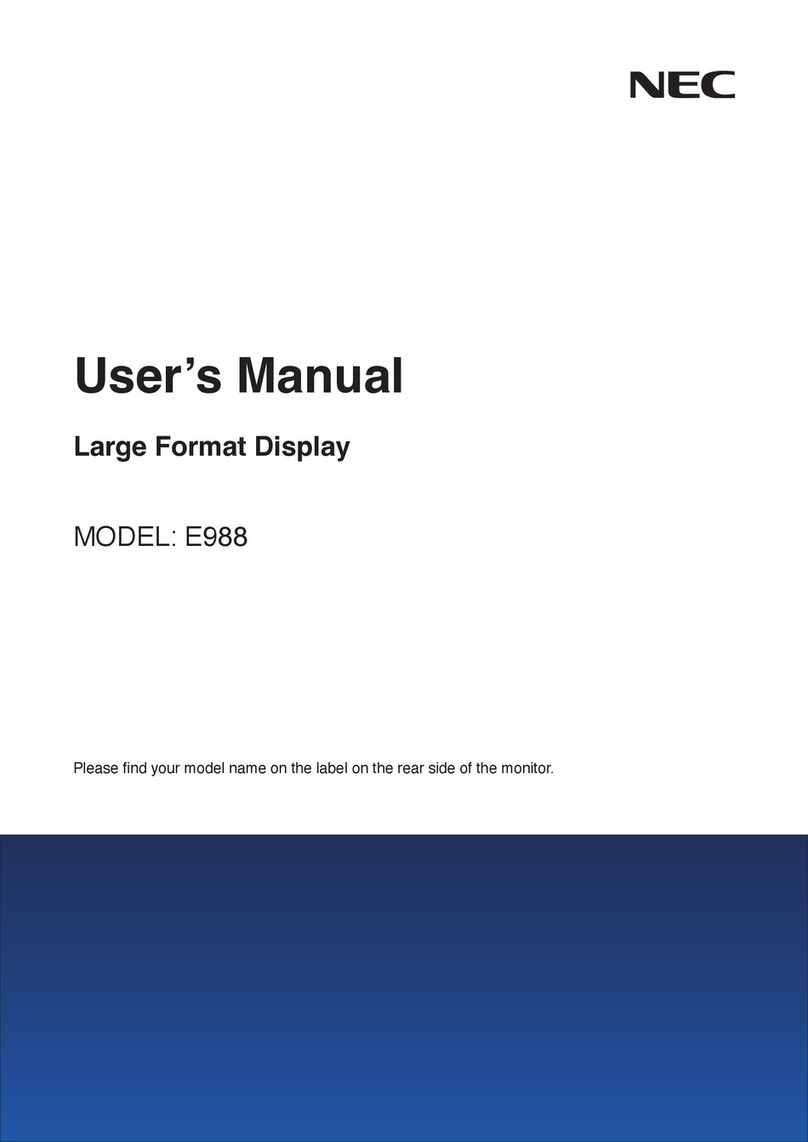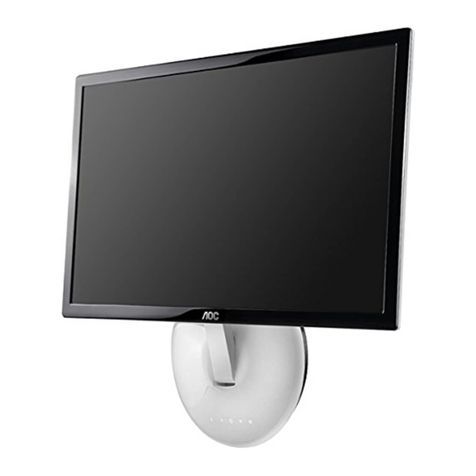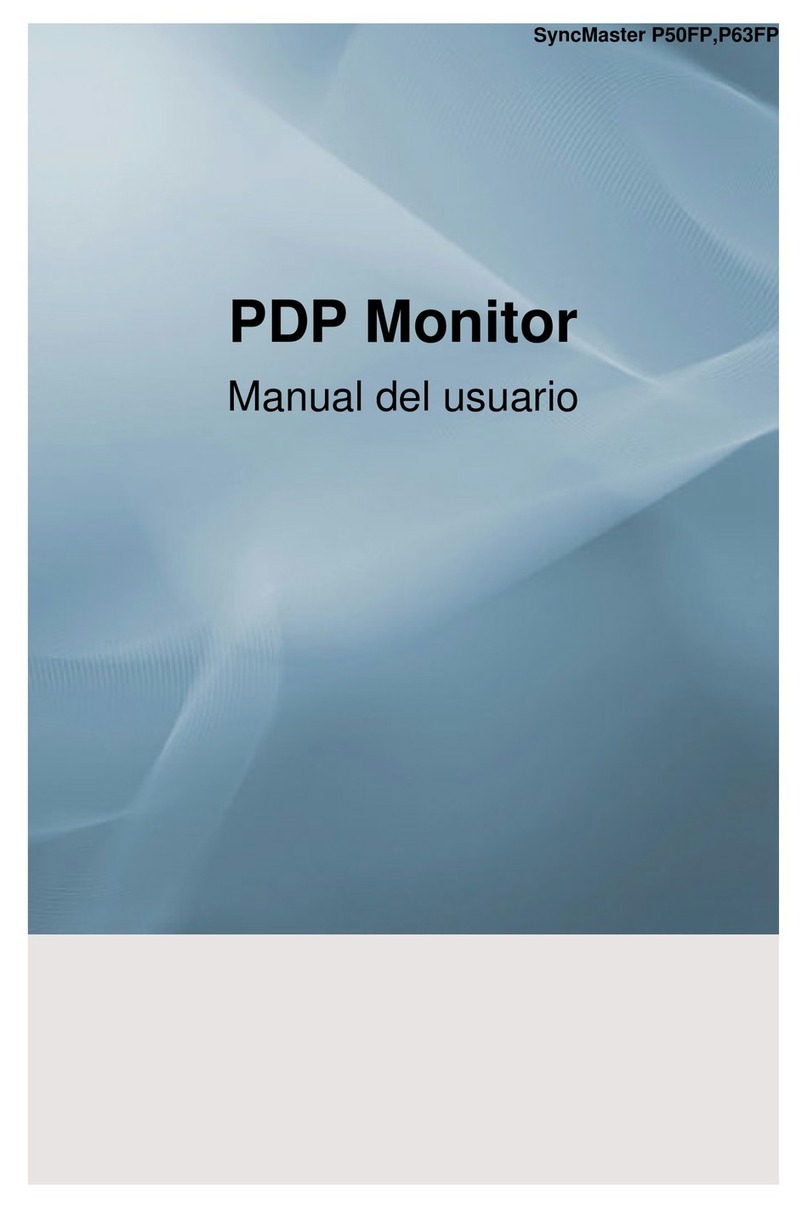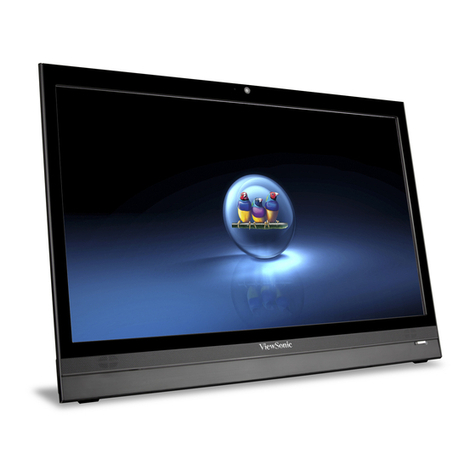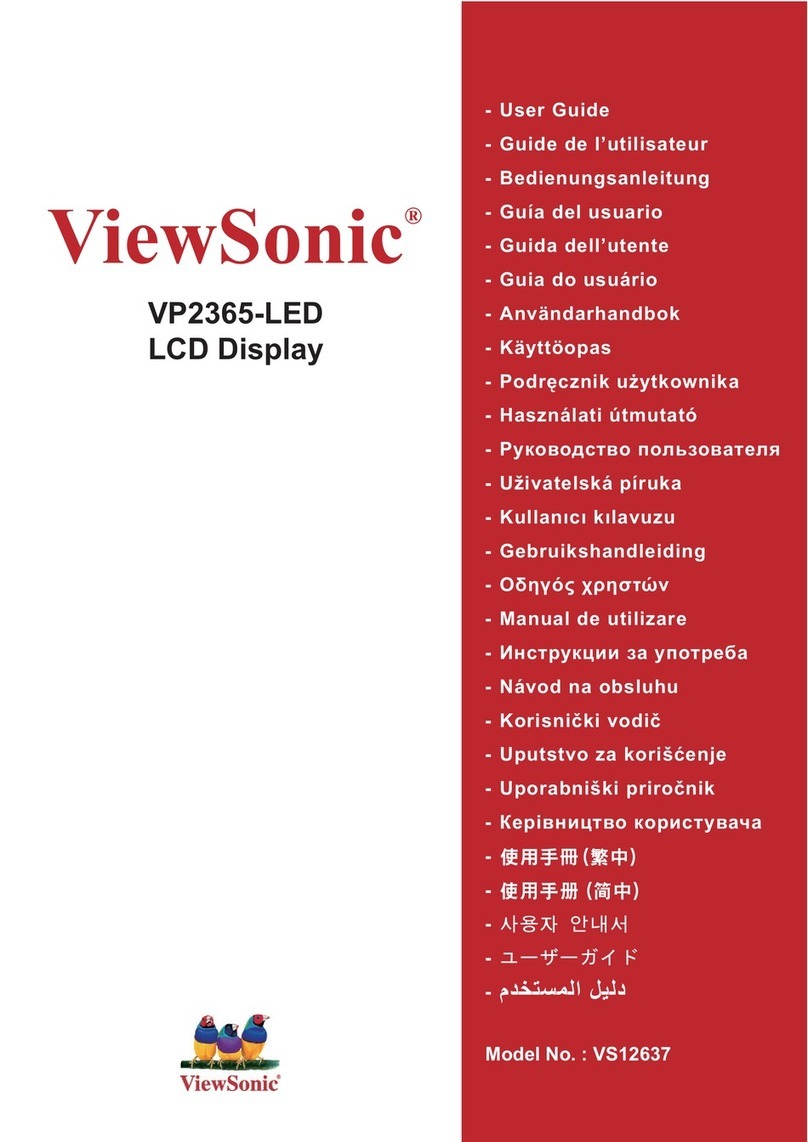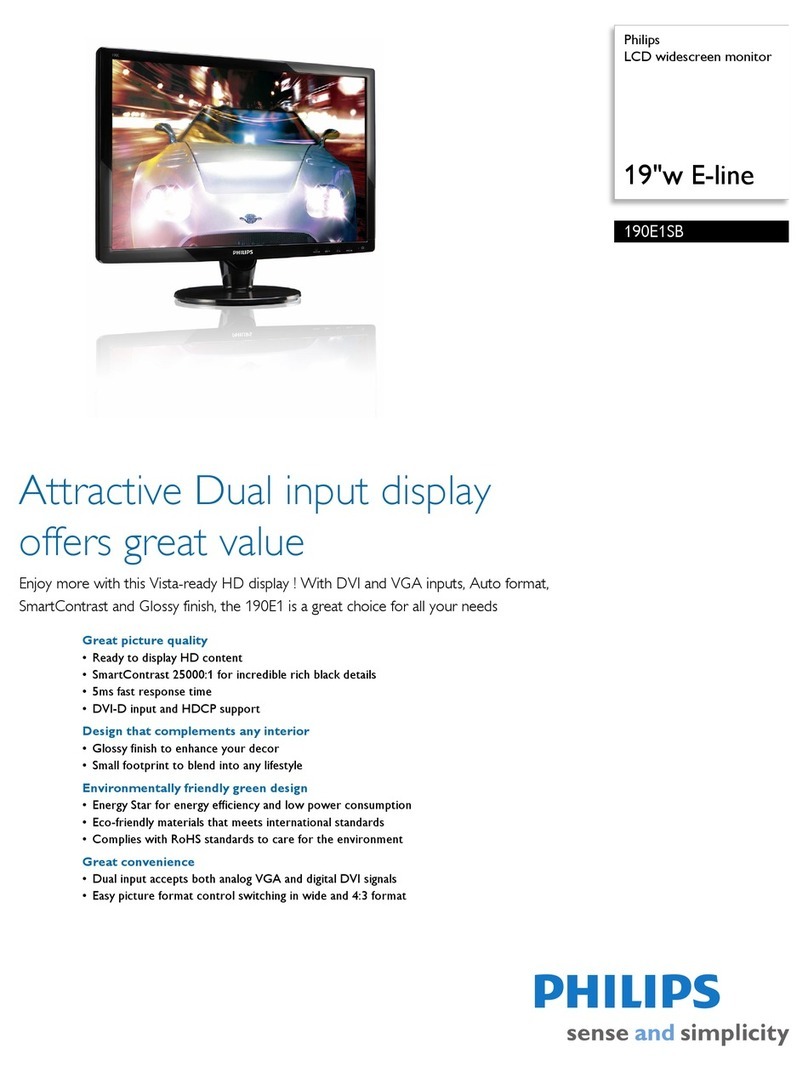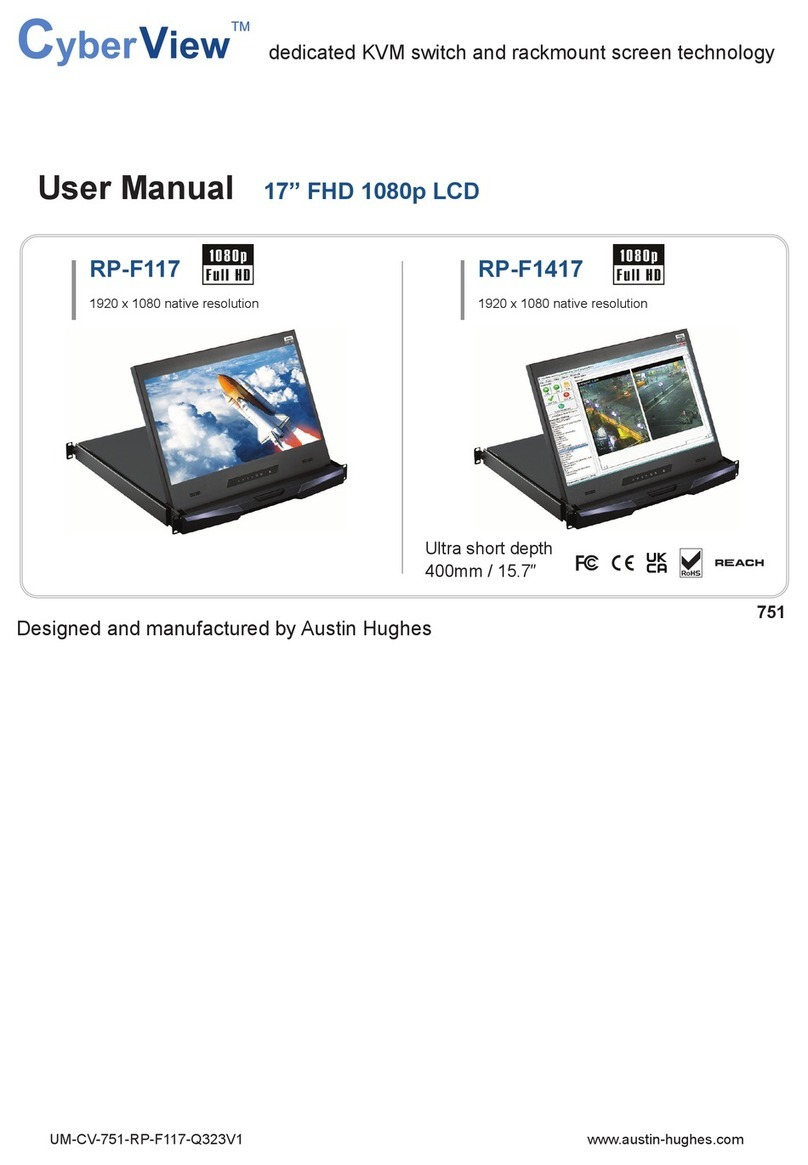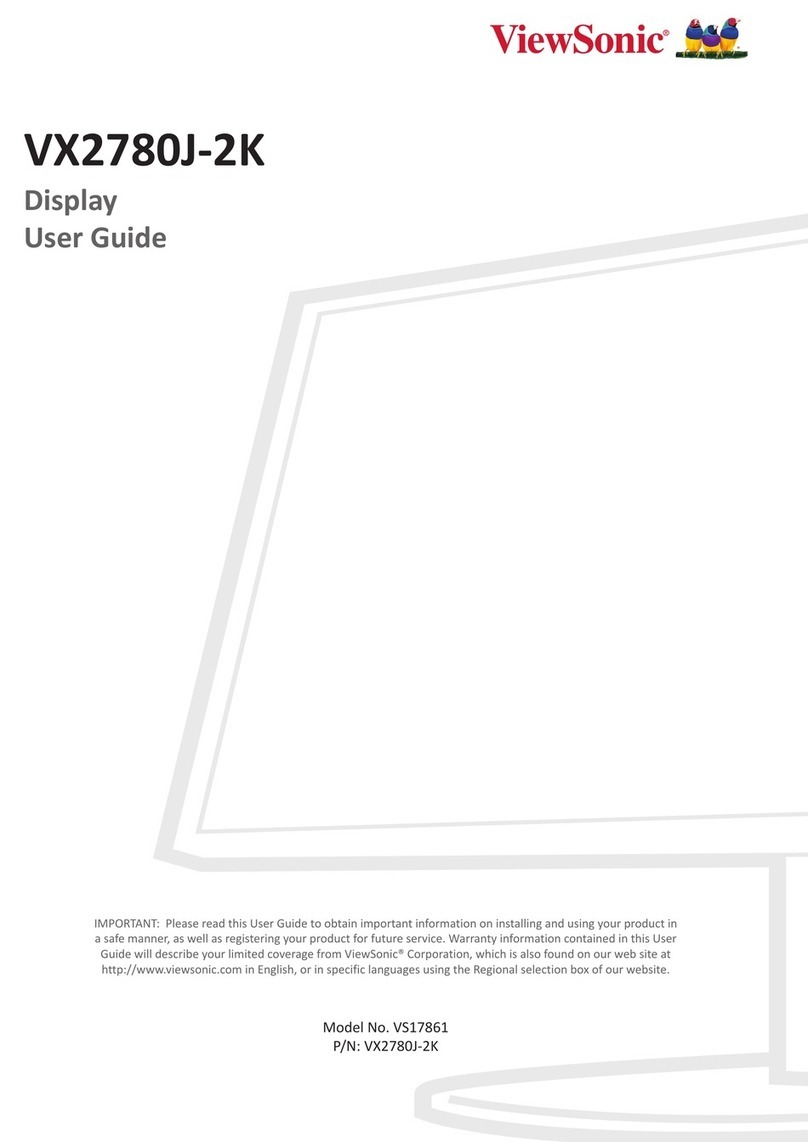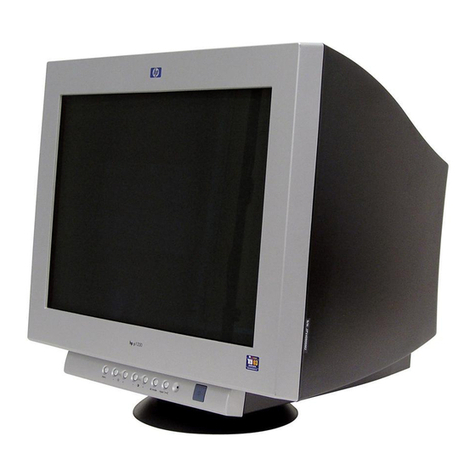ENMET CO-GUARD User manual

ENMET
ENMETENMET
ENMET Corporation
PO Box 979
Ann Arbor, MI 48106-0979
80002-044
April 2006
MCN-347, 05/18/06
CO-GUARD
Compressed Air Line CO Monitor
Manual


Table of Contents
1.0 INTRODUCTION........................................................................................................................................................1
1.1 U
NPACK
......................................................................................................................................................................1
1.2 C
HECK
O
RDER
.............................................................................................................................................................1
1.3 S
ERIAL
N
UMBERS
........................................................................................................................................................1
2.0 COMPONENTS OF THE CO-GUARD.......................................................................................................................2
2.1 CO-G
UARD ELEMENTS
................................................................................................................................................2
2.2 CO-G
UARD
O
PERATIONAL
F
EATURES
..........................................................................................................................2
2.3 C
IRCUIT
B
OARD
F
EATURES
..........................................................................................................................................4
3.0 INSTALLATION .........................................................................................................................................................5
3.1 M
OUNTING
CO-G
UARD
...............................................................................................................................................5
3.2 W
IRING THE
CO-G
UARD
..............................................................................................................................................6
3.2.1 Air Supply............................................................................................................................................................6
3.2.2 Power Supply.......................................................................................................................................................6
3.2.3 Relay Contacts.....................................................................................................................................................7
4.0 OPERATION................................................................................................................................................................8
4.1 S
TART
U
P
CO-G
UARD
.................................................................................................................................................8
4.1.1 Typical Start Up...................................................................................................................................................8
4.2 N
ORMAL
D
ISPLAY
M
ODE
.............................................................................................................................................9
4.2.1 Alarm Conditions CO-G
UARD
..............................................................................................................................9
5.0 MAINTENANCE .......................................................................................................................................................10
5.1 M
AINTENANCE
M
ENUS
..............................................................................................................................................10
5.2 C
ALIBRATION OF THE
CO-G
UARD
..............................................................................................................................12
5.2.1 Exit Maintenance Menu......................................................................................................................................13
5.2.2 Zero Adjust ........................................................................................................................................................13
5.2.3 Gas Span ...........................................................................................................................................................14
5.2.4 Alarm Set Points ................................................................................................................................................15
5.2.5 Span Set.............................................................................................................................................................15
5.4 S
ENSOR
R
EPLACEMENT
.............................................................................................................................................16
6.0 REPLACEMENT PARTS..........................................................................................................................................17
7.0 TECHNICAL DATA AND SPECIFICATIONS........................................................................................................17
8.0 WARRANTY..............................................................................................................................................................18
List of Tables
T
ABLE
1 : R
ELAY
F
AILSAFE
S
ETTINGS
.................................................................................................................... 7
T
ABLE
2: F
ACTORY
A
LARM
S
ET
P
OINTS
.................................................................................................................. 9
T
ABLE
3: CO-G
UARD
M
AINTENANCE
M
ENUS
S
EQUENCE
.........................................................................................10
T
ABLE
4: C
ALIBRATION
G
AS
.................................................................................................................................13
List of Illustrations
F
IGURE
1: E
XTERNAL
CO-G
UARD
F
EATURES
.......................................................................................................... 3
F
IGURE
1
A
: O
PTIONAL
R
EGULATOR AND
S
AMPLE
A
IR
H
OSE
..................................................................................... 3
F
IGURE
2: CO-G
UARD
C
IRCUIT
B
OARD
F
EATURES
................................................................................................... 4
F
IGURE
3: M
OUNTING
CO-G
UARD
.......................................................................................................................... 5
F
IGURE
4: P
OWER
T
ERMINAL
C
ONNECTIONS
CO-G
UARD
.......................................................................................... 6
F
IGURE
5: R
ELAY
T
ERMINAL
C
ONNECTIONS
CO-G
UARD
........................................................................................... 7
F
IGURE
6: CO-G
UARD
M
AINTENANCE
M
ENU
F
LOW
C
HART
......................................................................................11
F
IGURE
7: C
ALIBRATION
A
DAPTER
.........................................................................................................................12
F
IGURE
8: CO-G
UARD
S
ENSOR
R
EPLACEMENT
.......................................................................................................16
Reference Information:
N
OTE
:[important information about use of instrument]
C
AUTION
:[affects equipment – if not followed may cause damage to instrument, sensor etc…]
W
ARNING
:
[affects personnel safety – if not followed may cause bodily injury or death.]
Earth Ground


CO-G
UARD
ENMET Corporation
1
1.0 Introduction
1.0 Introduction1.0 Introduction
1.0 Introduction
The CO-G
UARD
is a compressed air monitoring instrument that measures and detects Carbon Monoxide (CO) in
industrial compressed breathing air systems utilizing an electrochemical sensor. The CO-G
UARD
is N
OT
in an
enclosure rated for use in a Class I, Div 1, Groups B, C, D classified area and C
AN
N
OT
be installed in a hazardous
location.
Features of the CO-G
UARD
:
continuous monitoring of the sample air
continuous LCD display of gas and vapor concentrations
menu driven operational and maintenance controls
menu driven calibration procedure
audio and visual alarms indicate unsafe conditions
alarm relay contacts available on terminals
a fault relay and visual fault alarm
low air flow fault indication and display
alarm acknowledgement capability including audio defeat
mA outputs for target gas
N
OTE
:All specifications stated in this manual may change without notice.
1.1 Unpack
Unpack the CO-G
UARD
and examine it for shipping damage. If such damage is observed, notify both ENMET
customer service personnel and the commercial carrier involved immediately.
Regarding Damaged Shipments
N
OTE
:It is your responsibility to follow these instructions. If they are not followed, the carrier will
not honor any claims for damage.
This shipment was carefully inspected, verified and properly packaged at our company and delivered to the
carrier in good condition.
When it was picked up by the carrier at ENMET, it legally became your company’s property.
If your shipment arrives damaged:
•Keep the items, packing material, and carton “As Is.” Within 5 days of receipt, notify the carrier’s local office
and request immediate inspection of the carton and the contents.
•After the inspection and after you have received written acknowledgment of the damage from the carrier,
contact ENMET Customer Service for return authorization and further instructions. Have your Purchase Order
and Sales Order numbers available.
ENMET either repairs or replaces damaged equipment and invoices the carrier to the extent of the liability
coverage, usually $100.00. Repair or replacement charges above that value are your company’s responsibility.
The shipping company may offer optional insurance coverage. ENMET only insures shipments with the
shipping company when asked to do so in writing by our customer. If you need your shipments insured, please
forward a written request to ENMET Customer Service.
Regarding Shortages
If there are any shortages or questions regarding this shipment, please notify ENMET Customer Service within 5 days
of receipt at the following address:
ENMET Corporation
680 Fairfield Court
Ann Arbor, MI 48108
734-761-1270 734-761-3220 Fax
1.2 Check Order
Check, the contents of the shipment against the purchase order. Verify that the CO-G
UARD
is received as ordered.
Each CO-G
UARD
is labeled with its target gas. If there are accessories on the order, ascertain that they are present.
Check the contents of calibration kits. Notify ENMET customer service personnel of any discrepancy immediately.
1.3 Serial Numbers
Each CO-G
UARD
is serialized. These numbers are on tags on the equipment and are on record in an ENMET database.

ENMET Corporation CO-G
UARD
2
2.0 Components of the
2.0 Components of the 2.0 Components of the
2.0 Components of the CO-G
UARD
2.1 CO-G
UARD
elements
See Figure 1 for location of elements:
Feature Description
Enclosure A polycarbonate box, approximately 7 x 5 x 3, with a detachable front cover.
4 holes for mounting the enclosure to a vertical surface. Located at the corners of the bottom
of the enclosure, directly beneath the 4 front cover retaining screws. See Figure 3
Input Port The entrance for the air sample and calibration gas. The quick release fitting mates with one
on the optional Sample air hose and the calibration adapter.
Front Cover Detachable front cover of CO-G
UARD
with Display Panel. See Section 2.2 and Figure 1
There are 4 Screws that hold the front cover in place.
Sample Air Hose
(Optional) A five foot long hose to conduct a sample of the air from the source to the instrument.
The hose has a Female quick release fitting and regulator. See Figure 1a
Regulator
(Optional) To connect to the compressed air line. Sample pressure to the CO-G
UARD
should be set to
55
PSI
. See Figure 1a
2.2 CO-G
UARD
Operational Features
The Display Panel is attached by a cable and is released by unscrewing the 4 screws located in the corners. After
releasing the panel, it is swung upward, exposing the interior of the enclosure. See Figure 1 for location of features.
Feature Description
Display A single line, 8 character LCD with backlight. Indicates the level of gas detected by sensor.
The numerical value of gas concentration and other information is displayed.
Audio Alarm(Horn) Audio alarm (2900 Hz,95 dB at 2 ft.). The audio alarm is on when the unit is in alarm.
Visual Indicators and
Alarms LED indicators:
Power / Fault Indicator LED, Green / Red
Alarm (3) Indicator LED, Red
Membrane Switches 2 Pushbutton Switches on front panel control the instrument maintenance functions. The
pushbutton switch locations are indicated by:
M
ENU
↓
↓↓
↓: Advances the instrument display through operation information and maintenance
menus
S
ELECT
: Disables audio alarm temporally and
Selects the maintenance menu operations such as, Zero, Span, Exit menu or sets
proper calibration values for Zero or Span
See Section 4.0 and 5.0 for operational and maintenance flow charts.
Flowmeter A flow indicator located at the output of the sample flow stream, which indicates
quantitatively the flow of sample air or calibration gas through the instrument.
Three alarm points are preprogrammed into the CO-G
UARD
. At each alarm point, an LED on the front panel is
activated. These internal alarm settings are independent of the 4-20mA output alarm values that can be set at a
controller. An optional relay board is available that will activate 0.5 Amp relay contacts at each alarm point, plus a
fault relay.

CO-G
UARD
ENMET Corporation
3
Figure 1: External CO-G
UARD
Features
Figure 1a: Optional
R
EGULATOR AND
S
AMPLE
A
IR
H
OSE
Regulator
Female Quick Release
Fitting to Inlet Port
¼“ NPT
Select
Menu
Input Port
Audio Alarm
Strain Relief
Visual Indicators:
Alarm1, Alarm2, Alarm3
Flowmeter
Pushbutton Switches
Visual Indicator
Power/Fault
Front Cover
Retaining Screws
4 places

ENMET Corporation CO-G
UARD
4
2.3 Circuit Board Features
The Display Panel is attached by a cable and is released by unscrewing the 4 screws located in the corners. After
releasing the panel, it is swung upward, exposing the interior of the enclosure. The Circuit Board is mounted at the
back surface of the enclosure interior. Features are shown in Figure 2.
Feature Description
Relay Terminals This group of terminals is located on the Circuit Board.
For the contacts for each of three alarm relays, and for the contacts of a fault relay.
See Section 3.2.2
Output Terminals For the 4-20 mA output.
PCB/Sensor Manifold The PCB/Sensor manifold. The carbon monoxide sensor located under this housing.
Figure 2: CO-G
UARD
Circuit Board Features
Relay Terminals
J14, J15, J16, J17
PCB/Sensor Manifold
Relays
K1, K2, K3, K4
Terminal J12
External Power
4-20mA Output

CO-G
UARD
ENMET Corporation
5
3.0 Installation
3.0 Installation3.0 Installation
3.0 Installation
The CO-G
UARD
should be located near the pipe or tank containing the air to be monitored, and upstream from where
the air is being used. The CO-G
UARD
must be installed such that it samples the compressed air before it reaches the
users.
3.1 Mounting CO-G
UARD
Mount the CO-G
UARD
instrument on an appropriate vertical surface, leaving room for lid to be opened, using the
mounting holes provided. Avoid areas with excessive vibration or temperature extremes. The holes in the bottom of
the enclosure are 0.18 inch in diameter and form a 6.44″x 4.47″rectangle. See Figure 3
It is recommended to use #8 drywall anchors and screws for mounting the CO-G
UARD
to a drywall/sheetrock surface.
Dimensions are in inches.
Figure 3: Mounting CO-G
UARD
Left Side View
Cover Inside View
Opened Upward
Attached to Base
Ref: Remove hole plug for auxiliary wiring

ENMET Corporation CO-G
UARD
6
3.2 Wiring the CO-G
UARD
The electrical installation should conform to appropriate electrical codes, such as the National Electrical Code in the
United States.
W
ARNING
:
The compliance of the installation to appropriate codes is not ENMET’s responsibility.
The CO-G
UARD
should be powered through circuit breakers provided for this purpose.
3.2.1 Air Supply
Tap the pipe or tank containing the breathing air and use appropriate fittings to connect the sample input hose. The
instrument is designed to operate from an air supply pressure 55
PSIG
. The sample input hose length should be as short
as possible.
The CO-G
UARD
should be tapped into the compressed air line upstream of all respirator connection points to ensure
the CO-G
UARD
monitors the supplied air Before it gets to the respirator connection points.
3.2.2 Power Supply
The input power can vary from 100 to 240V
AC
, 50/60 Hz. Mains power should be connected to the Power Input
Terminal TB1 and the ground screw. See Figure 4 for location.
Upon supplying air and power to the CO-G
UARD
:
The green power on LED is lit.
The display backlight is lit, and instrument will step through a start-up sequence: unit serial number and software
revision may be shown on the display.
The instrument may go into alarm briefly, but the sensors stabilize quickly. If the instrument persists in alarm,
acknowledge the alarm by pressing the S
ELECT
button. If alarm persists longer than 30 minutes, call ENMET
customer service personnel.
For DC wiring 24Vdc may be wired to J12, (J12-1)position 1 + with ground connected to (J12-2)position 2.
AC Power Supply Terminal: TB1
Label on PCB Function
110V
AC
TB1 ACN Neutral
TB1 ACL Line
AC GND
220V
AC
TB1 ACN Neutral
Optional TB1 ACL Line
AC GND
DC Power Supply Terminal: J12
Position Function
1 + 24 V
DC
power
2GND
34 - 20 mA out
Figure 4: Power Terminal Connections CO-G
UARD
Cover Inside View
Opened Upward
Attached to Base

CO-G
UARD
ENMET Corporation
7
3.2.3 Relay Contacts
Relay contacts are available for each alarm; these are SPDT, rated at 10Amp at 110V
AC
, and may be latching or non-
latching as required by the application.
They are accessed on the terminals next to each relay see Figure 5. The contact positions are noted on the circuit
board next to each terminal.
The following table is for the relays in their un-energized state. This is also the alarm condition state. Non-failsafe
configured relays in the alarm state, are the reverse of the PC board labeling. Note that the Fault(FLT) relay cannot be
set to operate in a Non-Failsafe mode. Please see Table 1 below:
Table 1 : Relay Failsafe Settings
Position
J14 Relay 1 - NO Normally Open
J14 Relay 1 - COM Common
J14 Relay 1 - NC Normally Closed
J15 Relay 2 - NO Normally Open
J15 Relay 2 - COM Common
J15 Relay 2 - NC Normally Closed
J16 Relay 3 - NO Normally Open
J16 Relay 3 - COM Common
J16 Relay 3 - NC Normally Closed
These relay contacts can be used to operate auxiliary alarms or other functions. Use the existing hole in the enclosure
for a wire exit, and use appropriate cable fittings. See Figure 2. Be sure to note the location and depth of hardware
inside the enclosure.
Figure 5: Relay Terminal Connections CO-G
UARD
Relay Terminals
J14, J15, J16, J17
Relays
K1, K2, K3, K4

ENMET Corporation CO-G
UARD
8
4.0 Operation
4.0 Operation4.0 Operation
4.0 Operation
When the CO-G
UARD
is installed as described in Section 3, and in clean air, the POWER green LED is on, the
display is lit and the information on the display is measurement of carbon monoxide detected by the CO-G
UARD
. The
red alarm and fault LEDs are not lit.
4.1 Start Up CO-G
UARD
When the CO-G
UARD
is first powered up, it goes through a series of momentary screens, which identify the
instrument model number, serial number and software revision. After all of the momentary screens have been
displayed, the instrument arrives at the Main Gas Display showing the gas concentration and unit of measurement.
Depending on transmitter configuration and calibration condition, the furthest right character in the display may flash a
letter indicating the instrument status. See the Section 4.1.1 below
4.1.1 Typical Start Up
When power is supplied to the CO-G
UARD
, the instrument will display the following sequence of information:
Typical start up sequence of information displayed.
Example of Typical Start Up Display Function
The instrument: Model CO-G
UARD
The instrument: Serial Number
The instrument: Software Revision
IF the right most character is a flashing WThe instrument is in Warm-up mode
This should last about 1 minute
The Signal Output is held at 4mA during warm-up
IF the right most character is a flashing CThe instrument has failed Calibration
The last good calibration values are retained, but the sensor
may not be responsive to gas
A new Calibration should be performed As Soon As Possible
The instrument: Normal Display Mode
Measurement of Carbon Monoxide
N
OTE
:
Software revision may cause variations of display output.
CO-Guard
300
- 20
S/W 6.5F
0 ppW
0
ppm
0 ppC

CO-G
UARD
ENMET Corporation
9
4.2 Normal Display Mode
When the CO-G
UARD
is installed as described in section 3, and in clean air, the POWER green LED is on, the display
is lit and the information on the display is measurement of carbon monoxide detected by the CO-G
UARD
. The red
alarm and fault LEDs are not lit.
To advance through displays of operational information press the M
ENU
button.
See sequence of operational information below:
Display Measurement of CO
Press M
ENU
button To temporally disable audio
alarm, see Section 4.2.1
Display indicates Alarm 1 Set point
Press M
ENU
button To temporally disable audio
alarm, see Section 4.2.1
Display indicates Alarm 2 Set point
Press M
ENU
button To temporally disable audio
alarm, see Section 4.2.1
Display indicates Alarm 3 Set point
Press M
ENU
button To temporally disable audio
alarm, see Section 4.2.1
Display indicates mA Span range
(Full Scale)
Press M
ENU
button
Display returns to CO measurent
To temporally disable audio
alarm, see Section 4.2.1
Operational Display Flow Chart
4.2.1 Alarm Conditions CO-G
UARD
There are three alarm set points for CO. The factory settings of these alarm set points are shown in Table 2.
Table 2: Factory Alarm Set Points
Gas Alarm 1 Alarm 2 Alarm 3
Carbon Monoxide 5 ppm 10 ppm 20 ppm
These alarm set points can be changed within limits; see the maintenance section of this manual for the procedure.
If the CO concentration increases above that of the alarm set point, the associated red LED is lit, the associated relay
changes state, and the audio alarm is activated.
Pressing the S
ELECT
button can temporally disable the Audio Alarm. The horn will be disabled for about five
minutes. If a second alarm condition occurs during this time the horn will re-activate. If the alarm condition(s) have
ended during this time the horn will not re-activate.
0 ppm
A1: 05
S
ELECT
S
ELECT
M
ENU
M
ENU
A2: 10
S
ELECT
M
ENU
A3: 20
S
ELECT
M
ENU
mA: 50
S
ELECT
M
ENU

ENMET Corporation CO-G
UARD
10
5.0 Maintenance
5.0 Maintenance5.0 Maintenance
5.0 Maintenance
The CO-G
UARD
maintenance menus that are accessed by pressing the M
ENU
button and entering a valid access code.
The access code is set at the factory and may be changed by following the access code menu explained in section 5.5.
5.1 Maintenance Menus
C
AUTION
:Do Not Attempt A Span Procedure Without Calibration Gas Applied to The Sensor; if this is done, the
instrument is forced into a calibration fault mode.
Pushbutton switches control the
M
ENU
and S
ELECT
functions. The M
ENU
and S
ELECT
button locations are indicated
on the display panel, see Figure 3. The M
ENU
button is used to display the various menu options and make
incremental changes to numbers such as alarm points, calibrations gas, etc. The S
ELECT
button is used to select that
option, set zero or span digit.
To enter the maintenance menu press and hold the M
ENU
button for 2 to 4 seconds
Table 3 indicates the maintenance menu sequence see Figure 6 for a detailed maintenance menu flow chart.
Table 3: CO-G
UARD
Maintenance Menus Sequence
Example of Display Function
Normal Display Mode
Measurement of CO
Press and hold the M
ENU
button for 2 – 4 seconds to enter the Maintenance Menu
The Power/Fault LED will flash Green – Red to indicate the CO-G
UARD
is in Maintenance Mode
To exit the maintenance Menu and return to the
Normal Display Mode:
If intended function Press S
ELECT
button
Press the M
ENU
button to advance to the Zero procedure
For adjusting Zero:
If intended function Press S
ELECT
button
Press the M
ENU
button to advance to the Span procedure
For adjusting the Span:
If intended function Press S
ELECT
button
Press the M
ENU
button to advance to each Alarm set point procedures
For adjusting the Alarm 1, 2 and 3 set points:
If Intended function Press S
ELECT
button
Press the M
ENU
button to advance the mA Span set point procedure
For adjusting the mA Span set point:
If intended function Press S
ELECT
button
Pressing the M
ENU
button without pressing the S
ELECT
button will allow you to cycle through the menu options.
You must Press the S
ELECT
button in order to initiate the desired operation.
5ppm
Exit
Zero
Span
mA Span
Alarm1 Alarm2 Alarm3

CO-G
UARD
ENMET Corporation
11
Normal Gas Display
F
IGURE
6: CO-G
UARD
Maintenance Menu Flow Chart
5ppm
M
ENU
Press and H
OLD
the M
ENU
button for 2 – 4 seconds to enter the Maintenance Menus
Exit
S
ELECT
Press the S
ELECT
button to return to the Normal Gas Display. See Section 5.2.1
M
ENU
Press the M
ENU
button to cycle through Maintenance Menus
M
ENU
PV: 0
20
Apply
Cal Gas until signal value becomes stable
(about 1 to 4 minutes) See Figure 6
Press S
ELECT
to enter the cal signal:
If cal is good display will indicate OK or Same
If cal is not within preset “range” display will
indicate Bad Sens
Cal OK
Same mV
Bad Sens
Span
S
ELECT
S
ELECT
OR
OR
S
ELECT
You can Press and
H
OLD
the
S
ELECT
button to
change the Calibration Gas Level
See Section 5.2.3
Alarm1
M
ENU
Alarm2
M
ENU
Alarm3
S
ELECT
S
ELECT
S
ELECT
0020
0005
0005
0010
0010
To change Alarm set points:
Press Menu button until Alarm to be changed is displayed
Press Select button to display the set point
The M
ENU
button changes digit indicated by underscore
cursor
The S
ELECT
button locks underscored digit and moves to
next digit
If change is not within range display returns to first digit
If change is within range display moves to next menu
See Section 5.2.4
M
ENU
mA Span
M
ENU
S
ELECT
0050
To change mA Span set point:
Press Menu button until mA Span is displayed
Press Select button to display the set point
The M
ENU
button changes digit indicated by underscore cursor
The S
ELECT
button locks underscored digit and moves to next digit
See Section 5.2.5
To
return to Normal Gas Display:
Press M
ENU
button until EXIT is displayed
Then press S
ELECT
button
OR
Zero
Cal OK
If
the Zero signal is not within Preset Specs the CO-Guard will
display Bad ZERO
S
ELECT
M
ENU
Bad ZERO
If
the Zero signal is within Preset Specs the CO-Guard will
display Cal OK, See Section 5.2.2
PV: 0
S
ELECT
Press the S
ELECT
button to initiate Zero adjustment

ENMET Corporation CO-G
UARD
12
5.2 Calibration of the CO-G
UARD
Calibration is the process of setting the instrument up to read accurately when exposed to a carbon monoxide gas. The
Zero function sets the clean air reference point and the Span function sets the sensitivity of the instrument.
Initial Calibration: Wait 3 – 4 hours after initially supplying power to the CO-G
UARD
instrument before initial
calibration. The CO-G
UARD
has been precalibrated at the factory, and initial field calibration should result in only
fine tuning to circuit, as well as a way to check that installation is successful. It is not necessary to open the enclosure
to make adjustment. The calibration functions are operated with pushbuttons from outside the enclosure through the
MENU
and
SELECT
switches.
Calibration Zero and Span functions are two separate procedures. They operate independently of each other. It is
recommended that the Zero procedure be done prior to the Span procedure.
ENMET Corporation recommends at least quarterly calibration of the CO-G
UARD
instrument.
Calibration equipment is available from ENMET Corporation to calibrate the CO-G
UARD
instrument.
•Calibration adapter, a length of tubing with a regulator for the gas cylinder on one end, and a quick release fitting to
connect to the sample input of the CO-G
UARD
on the other.
•Gas cylinder, Zero gas 20.9% oxygen or Span gas, typical 20 ppm CO
•Aerosol cylinder, contains Zero gas or Span gas. Supplied with flow regulator bellows assembly.
•Adapter aerosol cylinder, with quick release fitting to connect to the sample input of the CO-G
UARD
.
Generally, a cylinder of 20.9% Oxygen is used to provide a Zero point or fresh air reference for the calibration.
A cylinder of Carbon Monoxide is used to provide the Span reference point for calibration. 20ppm CO is
recommended.
Figure 7: Calibration Adapter
Menu Select
Aerosol Gas
Cylinder
Input Port Fitting
Adapter, Aerosol cylinder
Flow Regulation Bellows Assembly
Insert into trigger regulator of the
aerosol cylinder
Gas Cylinder
Calibration adapter

CO-G
UARD
ENMET Corporation
13
Table 4: Calibration Gas
Gas Range Alarm 1 Alarm 2 Alarm 3 Sensor
Part Number
Span
Calibration Gas
Carbon Monoxide 0 – 50 PPM 5 PPM 10 PPM 20 PPM 67025-1200 20 PPM Carbon Monoxide
5.2.1 Exit Maintenance Menu
Exit maintenance, by pressing the Exit appears on the display. Press the S
ELECT
button to return to the instrument
Normal Gas Display.
Example of Exit menu:
5.2.2 Zero Adjust
The ZERO function must be performed by exposing the CO-G
UARD
instrument to clean fresh air. If the air at the
sensor is in question, use a cylinder of 20.9% oxygen to provide a clean air reference.
Enter the maintenance menu by pressing and holding M
ENU
button for 2 to 4 seconds. See Figure 6, CO-G
UARD
Maintenance Menu flow chart.
After entering the maintenance menu, Press the M
ENU
button until the Zero menu is displayed.
Press the S
ELECT
button to perform a Zero.
The display will alternate between Zero and PV: To abort Zero function press and hold M
ENU
button for 3 – 4 seconds,
Abort? will appear, press S
ELECT
button to return to Zero.
Press the S
ELECT
button to initiate a Zero adjustment.
An auto detect sequence is initiated. After 15 seconds, the CO-G
UARD
will monitor the zero reading for stability.
If the reading stabilizes, within the pre-programmed perimeters, an automatic zero adjustment will be made.
Cal OK appears on the display and in 1 – 2 seconds, display will change to Span.
If you wish to Span the sensor press the S
ELECT
button you are now ready to apply gas. Proceed to gas span step 2
If you wish to Exit the maintenance menu, press M
ENU
button until Exit is displayed, then press S
ELECT
button to
return to the instrument Normal Gas Display
If the reading does not stabilize, within 255 seconds, the procedure will be aborted. Sensor is outside of safe
parameters to be zeroed, the display will read Bad Zero. Repeat Section 5.2.2 Zero Adjust making sure to use a
Zero gas of 20.9% Oxygen. ENMET part number 03296-209 or 03100-209.
Example of Zero adjustment display:
Exit
S
ELECT
Press the S
ELECT
button to return to the Normal Gas Display.
M
ENU
Press the M
ENU
button to cycle through Maintenance Menus
OR
Zero
Cal OK
If
the Zero signal is not within Preset Specs the CO-Guard
will display Bad Zero and return to
Zero menu
S
ELECT
M
ENU
Bad ZERO
If
the Zero signal is within Preset Specs the CO-Guard will
display Cal OK momentarily then advance to Span menu
PV: 0
S
ELECT
Press the S
ELECT
button to force Zero adjustment
Zero
Note: You can Press and
H
OLD
the
M
ENU
button to abort Zero
When Abort? appears press S
ELECT
button to
return to Zero menu
Abort?
S
ELECT
M
ENU

ENMET Corporation CO-G
UARD
14
5.2.3 Gas Span
It is recommended that the Zero Function be performed first.
Do not perform a calibration unless span gas is applied to sensor. Calibration can be aborted by pressing and holing
the M
ENU
button for 3 – 4 seconds.
Enter the maintenance menu. See Figure 6, CO-G
UARD
Maintenance Menu flow chart.
1. Press the M
ENU
button until Span display.
2. Press the S
ELECT
button to perform a Span procedure.
The display will alternate between the calibration gas concentration (Cal 20) and a signal level (PV).
To Abort calibration press and Hold M
ENU
button for 3 – 4 seconds, Abort? will appear, press S
ELECT
button to
return to Span.
To change calibration gas level to be used, press and Hold S
ELECT
button for 3 – 4 seconds, use menu button to
change digit and select button to move to next digit.
3. Attach the associated aerosol gas or calibration gas cylinder to the calibration adapter. See Figure 6on
calibration adapter.
4. Open the valve or pull the trigger to expand the bellows, to apply the calibration gas to the sensor.
An auto detect sequence is initiated after 30 seconds, the CO-G
UARD
will monitor the cal reading for stability.
5. Watch for the signal level to stabilize. 1 – 4 minutes.
6. Once the signal level has stabilized,
If the Span is successful, Cal OK appears momentarily, then will advance to Alarm1 menu.
If the sensor is outside of acceptable parameters, Bad Span is displayed.
If the sensor did not respond, an incompatible span gas was applied and the sensor did not respond at all,
Same mV is displayed then will return to Span.
If calibration is not successful, it is suggested that calibration be attempted again in 30-60 minutes.
If the sensor will not calibrate See Section 5.4.
7. Remove the calibration gas.
8. Calibration is complete.
Note: The instrument will return to operation mode in 3 – 5 seconds.
9. Press the M
ENU
button to advance to next desired menu
Example of Calibration Display:
M
ENU
PV: 0
20
Apply
Cal Gas until signal value becomes stable
(about 1 to 4 minutes) See Figure 7
When cal signal is stable CO-G
UARD
will automatically update:
If cal is good display will indicate OK or Same and advance to
Alarm1
If cal is not within preset “range” display will indicate Bad Sens
or Same mV The CO-G
UARD
will return to the Span Menu
To exit press M
ENU
button until Exit appears and press S
ELECT
Cal OK
Span
S
ELECT
S
ELECT
PV: 0
S
ELECT
You can Press and
H
OLD
the
S
ELECT
button to change the
Calibration Gas Level
-Use the M
ENU
button to change digits
-Use the S
ELECT
button to move to next digit
N
OTE
:
To abort calibration or change calibration gas level.
You can Press and H
OLD
the M
ENU
button to abort Calibration
When Abort? appears press S
ELECT
button to advance to
Alarm1 menu
Abort?
S
ELECT
20
M
ENU
Same mV
Bad Sens
OR

CO-G
UARD
ENMET Corporation
15
5.2.4 Alarm Set Points
The CO-G
UARD
alarm set points can be changed within limits. See Table 4 for factory set alarm points.
To change any of the three alarm points:
Enter the maintenance menu as shown in Figure 6 CO-G
UARD
Maintenance Menu flow chart.
1. Press the M
ENU
button until to display Alarm1 is displayed.
2. Press the S
ELECT
button to initiate alarm set point change
3. Press the M
ENU
button to change the digit indicated by the underscore cursor
4. Press the S
ELECT
button to move the cursor to the next digit
When last digit is entered the CO-G
UARD
will advance to the next menu
5. Press the M
ENU
button to advance to the next menu
Example of Alarm Set Point menus:
5.2.5 Span Set
The CO-G
UARD
4-20mA span range can be changed within limits. See Table 4 for factory set range.
To change the span range:
Enter the maintenance menu as shown in Figure 6 CO-G
UARD
Maintenance Menu flow chart.
1. Press the M
ENU
button until to display Span is displayed.
2. Press the S
ELECT
button to initate the mA Span menu
3. Press the M
ENU
button to change the digit indicated by the underscore cursor
4. Press the S
ELECT
button to move the cursor to the next digit
When last digit is entered the CO-G
UARD
will advance to the next menu
5. Press the M
ENU
button to advance to the next menu
Example of mA Span menu:
Default mA Span
4mA 20mA
0 ppm 50 ppm
Alarm1
M
ENU
Alarm2
M
ENU
Alarm3
S
ELECT
S
ELECT
S
ELECT
0020
0005
0005
0010
0010
To change Alarm set points:
Press Menu button until Alarm to be changed is displayed
Press Select button to display the set point
The M
ENU
button changes digit indicated by underscore
cursor
The S
ELECT
button locks underscored digit and moves to
next digit
If change is not within range display returns to first digit
If change is within range display moves to next menu
M
ENU
mA Span
M
ENU
S
ELECT
0050
To change mA Span set points:
Press Menu button until mA Span is displayed
Press Select button to display the set point
The M
ENU
button changes digit indicated by underscore cursor
The S
ELECT
button locks underscored digit and moves to next digit

ENMET Corporation CO-G
UARD
16
5.4 Sensor Replacement
W
ARNING
:
Power must be removed from the CO-G
UARD
before this or any internal procedure. Failure to do so
may cause damage to equipment, bodily injury or death.
Sensors should be replaced when they can no longer be calibrated. Replacement sensor part numbers are listed in
Section 6.0 of this manual. If you do not know the proper part number for your sensor, have the CO-G
UARD
serial
number available when contacting your Distributor or ENMET Corporation Technical Support.
Remove, the 4 retaining screws from CO-G
UARD
lid and 2 retaining screws form sensor manifold, see Figure 6
Remove, the sensor assembly from the PCB/sensor manifold, see Figure 8.
Insert, the new sensor assembly and replace sensor manifold and 2 retaining screws.
Replace, lid and the 4 retaining screws.
Re-supply power to the CO-G
UARD
Figure 8: CO-G
UARD
Sensor Replacement
After the new sensor assembly has been installed, it is suggested to allow the sensor to stabilize for 3 – 4 hours.
A Factory calibration must be performed.
After entering the Maintenance menu, press and hold the M
ENU
button for 2-4 seconds while viewing the Zero menu.
After 2-4 seconds, an F will appear on the far right hand side of the display. The F indicates that the instrument is in
Factory mode.
Perform the calibration Zero and Span procedures as outlined in Section 5.2. Be sure that the F is present when
selecting the Zero and Span functions.
The Factory calibration sets a calibration window for future standard instrument calibrations.
PCB/Sensor
Manifold
Cover Inside View
Opened Upward
Attached to Base
Other manuals for CO-GUARD
1
Table of contents
Other ENMET Monitor manuals
Popular Monitor manuals by other brands
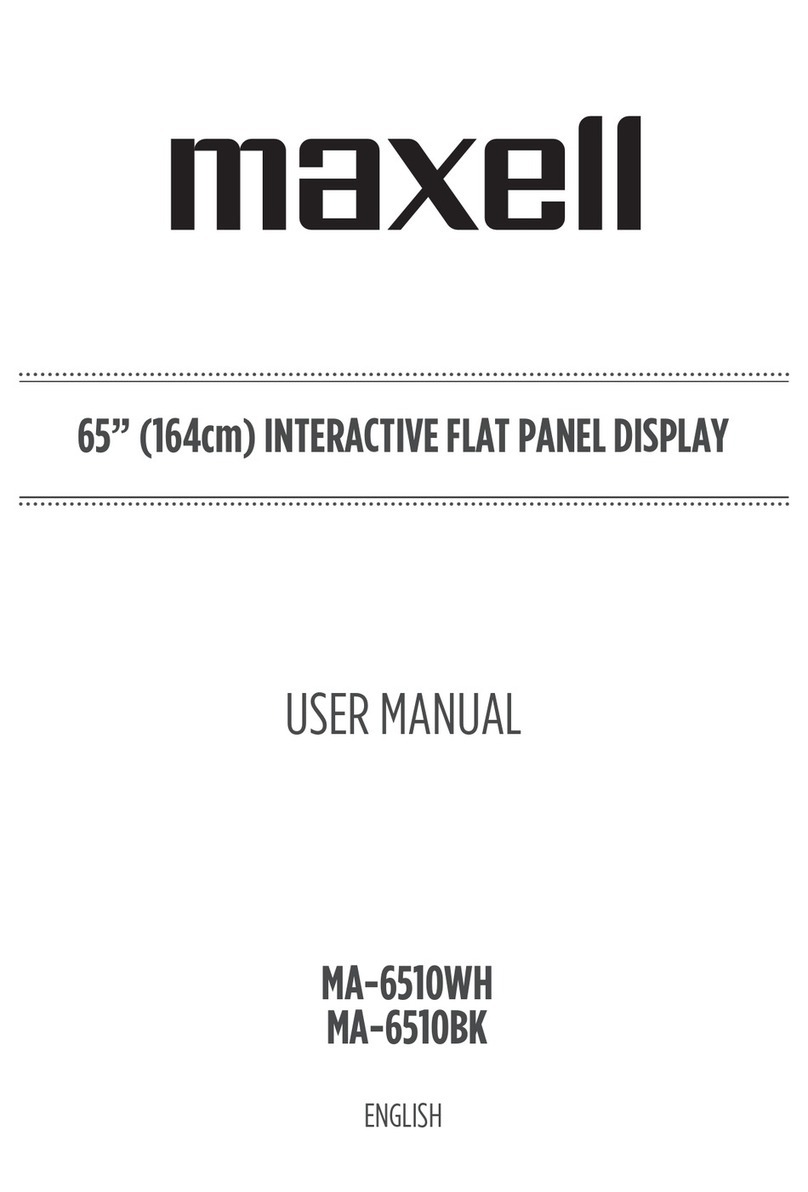
Maxell
Maxell MA-6510WH user manual
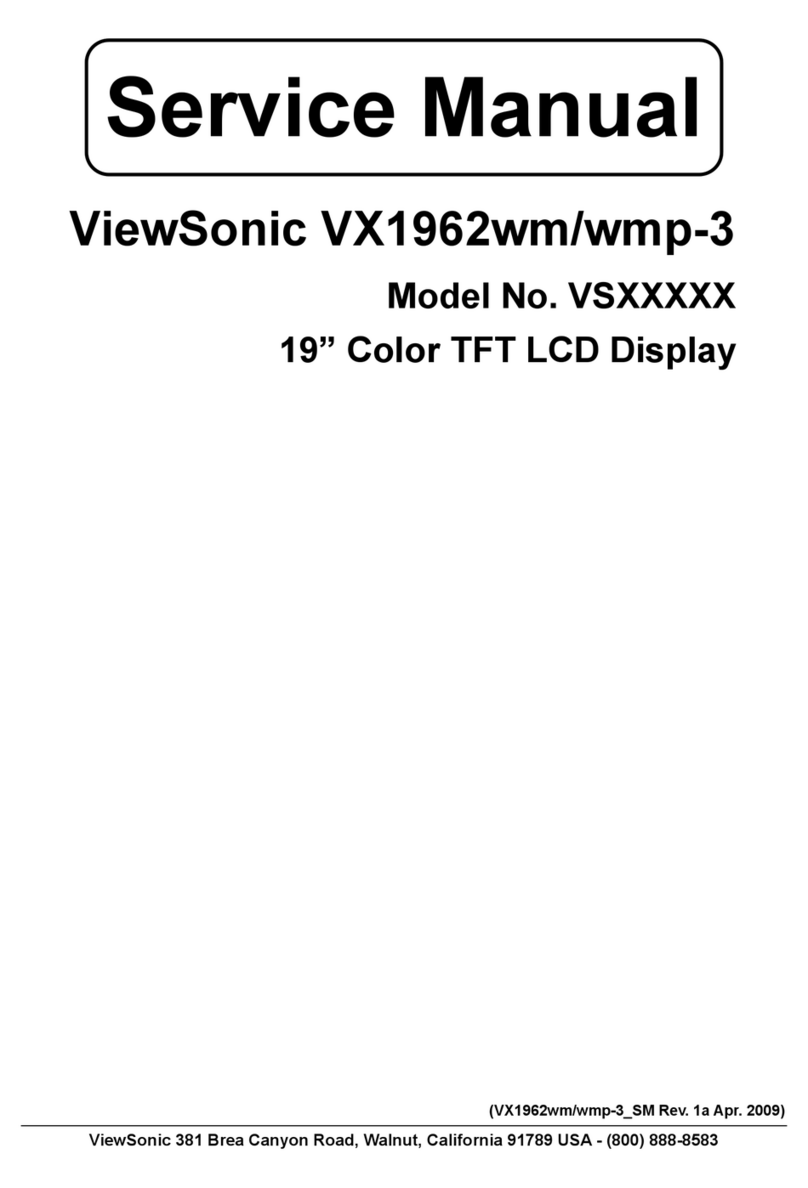
ViewSonic
ViewSonic VX1962wm - 19" LCD Monitor Service manual

novotechnik
novotechnik MAP 4000 Series Setup manual

Primeview
Primeview 40" user guide
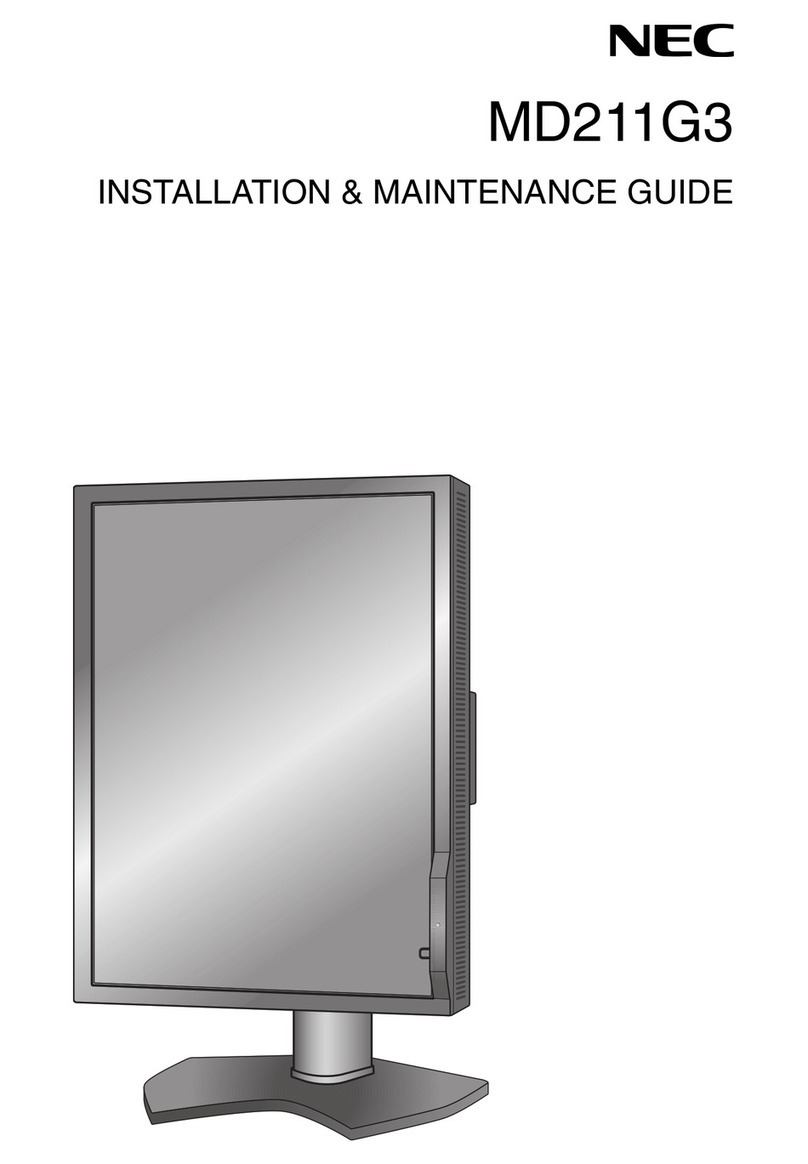
NEC
NEC MD211G3 Installation & maintenance guide
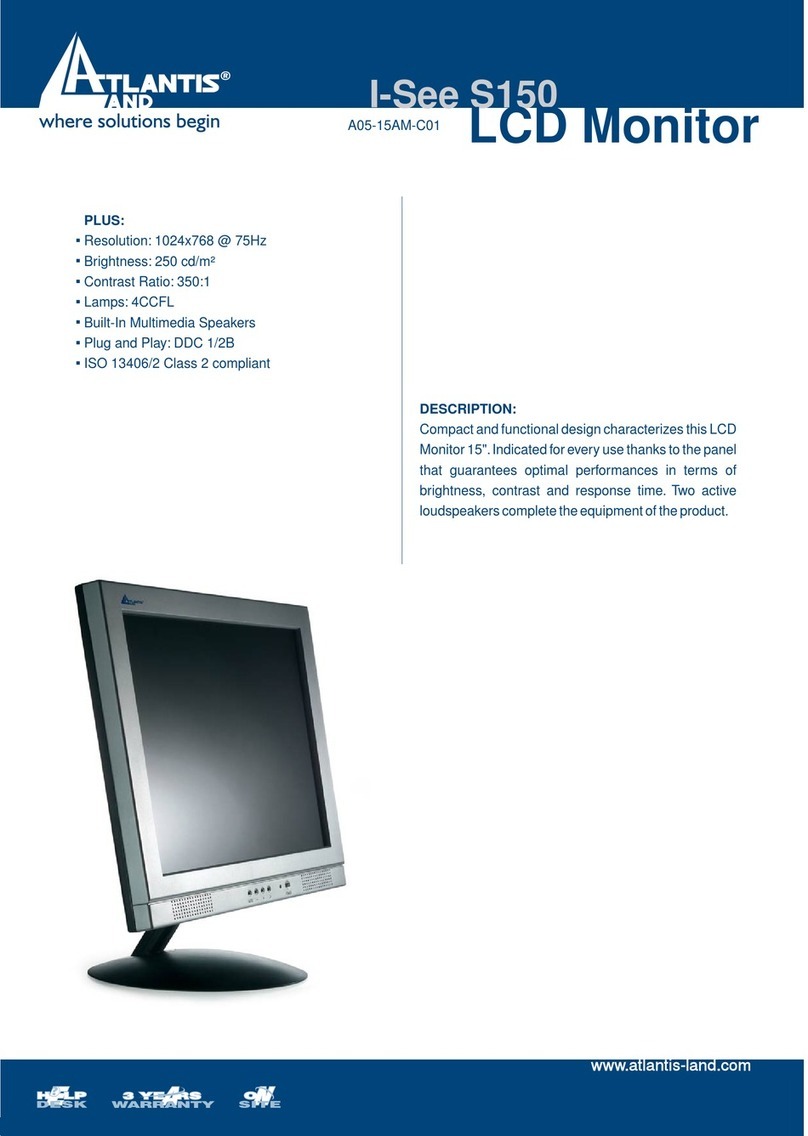
Atlantis Land
Atlantis Land I-See S150 LCD Monitor A05-15AM-C01 specification
